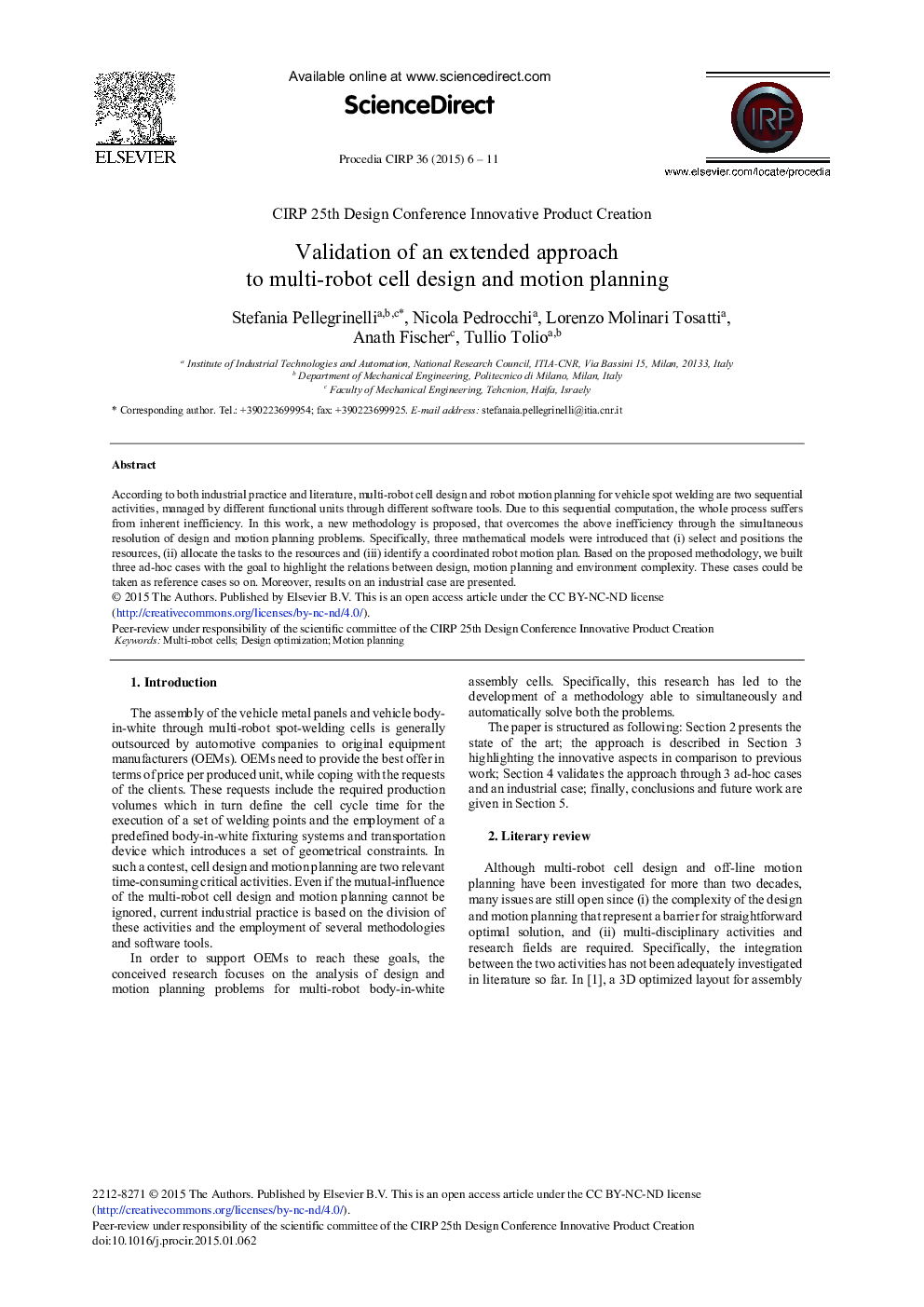| Article ID | Journal | Published Year | Pages | File Type |
|---|---|---|---|---|
| 1699384 | Procedia CIRP | 2015 | 6 Pages |
According to both industrial practice and literature, multi-robot cell design and robot motion planning for vehicle spot welding are two sequential activities, managed by different functional units through different software tools. Due to this sequential computation, the whole process suffers from inherent inefficiency. In this work, a new methodology is proposed, that overcomes the above inefficiency through the simultaneous resolution of design and motion planning problems. Specifically, three mathematical models were introduced that (i) select and positions the resources, (ii) allocate the tasks to the resources and (iii) identify a coordinated robot motion plan. Based on the proposed methodology, we built three ad-hoc cases with the goal to highlight the relations between design, motion planning and environment complexity. These cases could be taken as reference cases so on. Moreover, results on an industrial case are presented.
